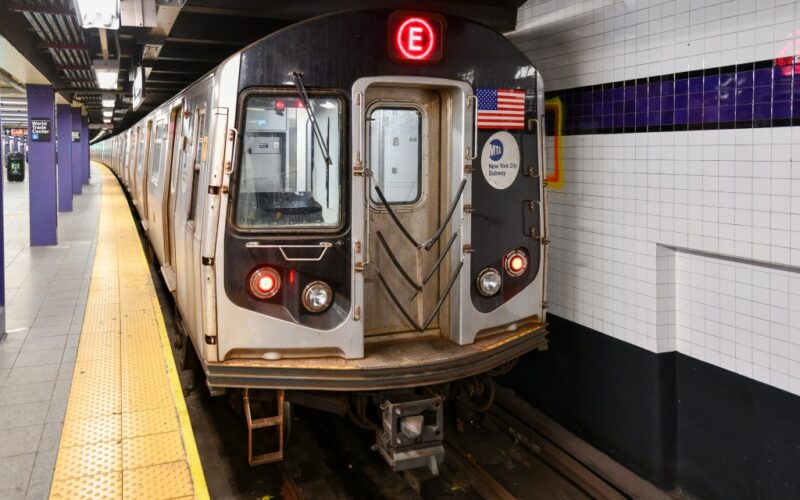The MTA’s board voted to purchase a batch of replacement subway wheels on Wednesday, after supplies were depleted by a mysterious wheel-wear issue on the E, F and R lines.
The $7.4 million purchase will yield New York City Transit 3,000 subway wheels from Standard Steel — or enough to reshod 375 subway cars.
“While steps have been taken to mitigate [the wheel-wear], the need for wheels increased,” read the procurement document before the MTA board. The 3,000 new wheels come on top of 25,000 replacement wheels ordered from firms Standard Steel and Transit Sourcing Services in 2023.
The wheel-wear issue, which was first reported in January by the Daily News, came about in the waning months of 2024.
The steel wheels of subway cars typically last months before needing to be refreshed and resurfaced — a process called “truing” that ensures train wheels are round and properly tapered to move easily over the rails.
But late last year, the wheels of the R160 cars operating on the E, F and R lines were wearing out in a matter of weeks. That led to a shuffling of train cars on the subway system’s lettered lines, and caused NYC Transit to temporarily move some of the system’s oldest cars over to the G line.
In June, NYC Transit President Demetrius Crichlow told The News that his teams had solved the issue by slowing trains down around a number of curves along the Queens Boulevard Line. Crichlow reiterated that in a report to the MTA board on Wednesday.
“We started looking at the rail-to-wheel adhesion rate, had a consultant come on board to give us some pointers on determining what curves in the system were causing more wear,” Crichlow told the board. “We looked at some of the locations, and just a small adjustment to the speed in those particular curves — where you were going around a curve, going a lot faster — slowing it down just, in some instances, five miles [per hour], reduced the wheel wear.”
“Since we made that modification, wheel wear resumed back to where it was previously,” Crichlow said.
“We actually looked at the specific curvature of the track itself,” the subway boss said. “We bought in a consultant that looked at where the wheel wear was actually taking place, and it was specifically at certain curves in the system.”
Trains operate around curves at full speed elsewhere in the system. But Crichlow told The News Wedensday that he suspected that the faster speeds enabled by updated signals along the Queens Boulevard Line contributed to the wheel-wear issue.
Crichlow said Wednesday that metallurgical testing had determined that there were no defects with the wheels that experienced additional wear.
“We actually did a steel metallurgy evaluation of prior wheels as well as the wheels we had, and we determined that it wasn’t an actual issue with the wheels.”
“We looked for every different scenario,” he said. “We looked under every rock, and found the culprit.”
The new subway wheels are expected to be delivered within the first quarter of next year.








